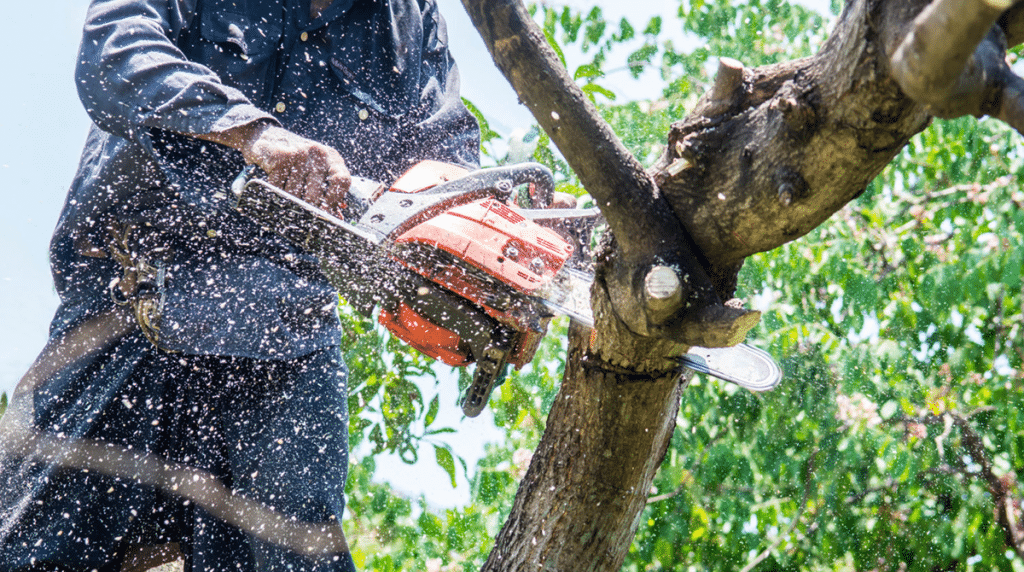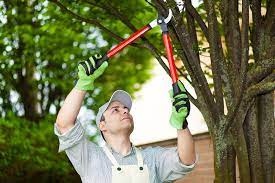Introduction
Tree maintenance is essential in keeping your home and garden looking their best. It can also help to protect your property from damage caused by overgrown branches or deadwood. Homeowners must know when tree maintenance is necessary and how to do it safely. This guide will provide the necessary information to ensure your trees are properly maintained and cared for. We'll cover topics such as when to prune, what tools to use, and how to dispose of debris safely. With this knowledge, you can keep your trees healthy and beautiful for years.
Understanding the Basics of Tree Maintenance: Types of Pruning and When to Do It
Tree maintenance is essential in keeping your trees healthy and looking their best. Pruning is one of the most common tree maintenance practices, and it involves removing dead or diseased branches and shaping the tree to improve its appearance. Several types of pruning can be done, and knowing when to do each type is essential for proper tree care.
The first type of pruning is called crown thinning. This involves selectively removing branches from the top of the tree to reduce its overall density and allow more light and air to reach the lower branches. Crown thinning should only be done in late winter or early spring before new growth begins.
The second type of pruning is called crown reduction. This involves reducing the size of the tree by cutting back the branches and removing some of the foliage. This pruning should only be done in late summer or early fall after the tree has finished growing for the season.
The third type of pruning is called deadwood removal. This involves removing any dead or diseased branches from the tree. Deadwood removal should be done throughout the year, as needed.
Finally, the fourth type of pruning is formative pruning. This involves shaping the tree to improve its structure and appearance. Formative pruning late winter or early spring before new growth begins.
By understanding the basics of tree maintenance and the different types of pruning, you can ensure that your trees stay healthy and look their best. Knowing when to do each type of pruning is essential for proper tree care.
How to Safely Prune Trees: Tools, Techniques, and Safety Precautions

Tree pruning is an essential part of tree maintenance that helps to keep trees healthy and safe. Pruning can help to remove dead or diseased branches, improve the shape of a tree, and promote new growth. When done correctly, pruning can also help to reduce the risk of damage from storms and other hazards. To ensure that your pruning efforts are successful, it is essential to use the right tools, techniques, and safety precautions.
When pruning trees, using the right tools for the job is essential. Hand pruners are ideal for small branches, while loppers and pruning saws are better for larger branches. Ensuring your tools are sharp and in good condition is also essential. Dull blades can cause damage to the tree and increase the risk of injury.
When pruning, it is essential to follow proper techniques. Start by removing dead or diseased branches first, then shape the tree. Make sure to cut at a 45-degree angle just outside the branch collar, the swollen area where the branch meets the trunk. This will help to promote healing and prevent disease.
Safety should always be a priority when pruning trees. Wear protective clothing such as gloves, long pants, and eye protection. Be aware of your surroundings and watch for power lines, buildings, and other obstacles. If you use a ladder, ensure it is stable and secure. Finally, never attempt to prune a tree if uncomfortable with the task. Hire a professional arborist if necessary.
By following these tips, you can safely and effectively prune your trees. Regular maintenance lets you keep your trees healthy and strong for years.
Identifying Signs of Tree Disease and Taking Appropriate Action

Tree maintenance is an essential part of keeping your landscape healthy and beautiful. Identifying signs of tree disease and taking appropriate action is critical to proper tree care.
The first step in identifying signs of tree disease is to look for changes in the tree's appearance. This could include discoloration of the leaves, wilting or yellowing of foliage, or unusual growths on the trunk or branches. If you notice any of these signs, taking action immediately is essential.
The next step is to contact a certified arborist or tree care professional. They can assess the tree and determine the cause of the problem. Depending on the severity of the issue, they may recommend pruning, fertilizing, or other treatments to help the tree recover. In some cases, they may even recommend removing the tree if it is beyond saving.
It’s also important to practice preventative tree maintenance. This includes regular tree inspections, proper watering and fertilization, and avoiding activities that can damage the tree, such as construction or digging. These steps can help ensure your trees stay healthy and strong for years.
Protecting Your Trees from Pests and Other Environmental Hazards
Tree maintenance protects your trees from pests and other environmental hazards. Regular tree maintenance can help to keep your trees healthy and strong and reduce the risk of damage from pests and other environmental factors.
The first step in tree maintenance is to inspect your trees regularly for signs of damage or disease. Look for dead or dying branches, discolored leaves, or other signs of distress. If you notice any of these signs, contact a professional arborist to assess the situation and provide treatment if necessary.
It is also important to prune your trees regularly. Pruning helps to remove dead or diseased branches, as well as promote healthy growth. Proper pruning techniques to ensure that the tree remains healthy and balanced.
In addition to regular inspections and pruning, protecting your trees from pests and other environmental hazards is essential. This can include using insecticides and fungicides to prevent infestations and mulching around the tree's base to help retain moisture and discourage weed growth.
Finally, it is essential to water your trees regularly. Trees need adequate water to remain healthy and robust, so check the soil moisture levels and water your trees when needed.
By following these simple steps, you can help to protect your trees from pests and other environmental hazards. Regular tree maintenance is essential for keeping your trees healthy and strong and reducing the risk of damage from pests and other environmental factors.
Conclusion
Tree Trimming is an essential part of keeping your property safe and healthy. Inspecting trees regularly for signs of damage or disease and pruning them as needed is necessary. Homeowners should also be aware of the potential hazards of tree maintenance and take appropriate safety precautions. With proper care and attention, trees can provide a beautiful and valuable addition to any home.


No comments yet